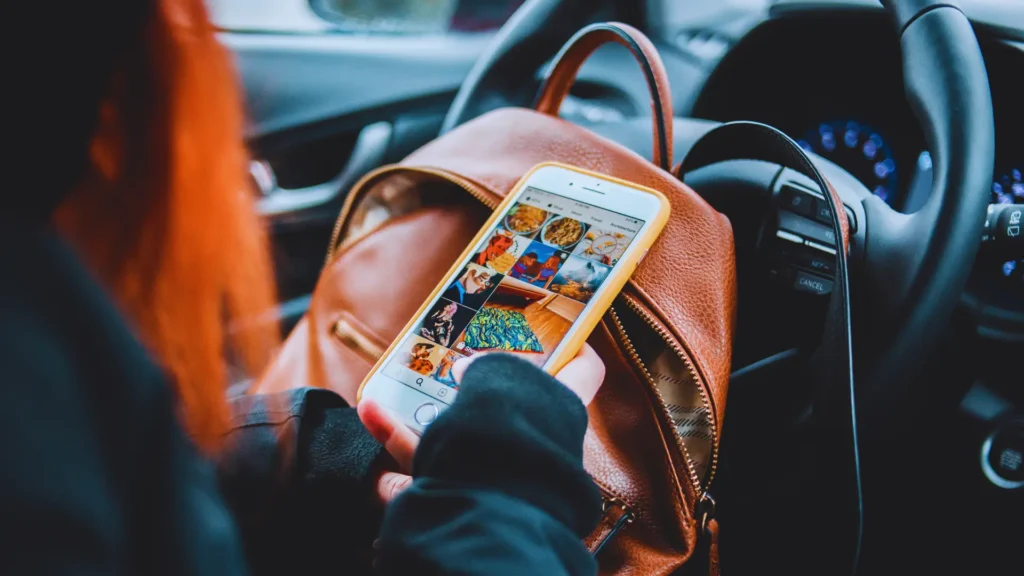The New Reality: Bot Engagement on the Rise
Bots and AI are now woven into the fabric of our online world, influencing everything from search rankings to social media feeds. In 2024, bots accounted for 51% of all internet traffic, the first time automated activity surpassed human browsing. Social platforms trends are just as alarming. Up to 40% of Instagram comments on sponsored posts are generated by bots.
This means a huge chunk of “engagement” isn’t even real human interaction. From artificially inflated follower counts to AI-generated profiles posing as people, bots have indeed taken over significant portions of the Internet’s attention.
The Rise Of The AI Influencer
One striking development is the rise of AI influencers. These characters, like the famous Lil Miquela or Shudu, have the ability to partner with brands, and engage fans just like Charlie D’Amelio or Kim Kardashian could, maybe at a fraction of the price.
Mentions of AI influencers surged 50% in early 2025 compared to late 2024, reflecting growing buzz and curiosity. For better or worse, brands are drawn to these virtual figures for their consistent content output and cost-effectiveness. An AI avatar, after all, doesn’t need sleep or a salary. H&M’s campaign with virtual influencer Kuki saw an 11× increase in ad recall.
Clearly, the appeal is real, but so are the concerns. Audiences worry about transparency and authenticity, and platforms like TikTok have even updated guidelines to demand AI-generated content be labeled as such.
Surveys reveal a split in public sentiment. About a third of surveyed consumers say they might be more interested in a brand using an AI influencer, but an equal amount say they’d distrust that brand. Virtual influencers are a fascinating new tool in social media strategy, but they walk a fine line between innovation and erosion of trust.

AI-Optimized Content Flooding Search Results
It’s not just social media feeling the bot invasion. SEO and content marketing are also affected. Advances in generative AI have given rise to automated content farms pumping out blog posts and articles around the clock. Today, anyone can use an LLM to generate an article in seconds and potentially set up a website that churns out SEO content 24/7.
An investigation in 2023 uncovered dozens of websites publishing content written entirely by AI, much of it “low quality” clickbait intended to game the algorithms. Some of these sites exist purely to draw ad clicks or affiliate revenue, while others unfortunately push disinformation or propaganda under the guise of news. The result is an increasingly cluttered search landscape, where human-created, experience-based content competes with machine-generated text optimized solely to rank for keywords.
Search Engines Are People-First, For Now
In response to rising concerns among consumers and business providers, Google’s approach has been to emphasize helpful, people-first content. In their quality guidelines, Google stresses E-E-A-T (Experience, Expertise, Authoritativeness, Trustworthiness) as a key to ranking well.
We’ve all heard some version of the phrase, “AI is here to stay, and those that use it to their advantage will get ahead.” While we have yet to see how that plays out, it is apparent that generative AI is not at the point where a simple prompt can churn out Nobel Peace winning content. Human oversight and human intuition is still very much needed, and search engines like Google, and even ironically ChatGPT, are still able to favour human-produced content.
In practice, high-quality content that genuinely helps users will be rewarded, regardless of whether an AI helped write it. However, spammy AI texts created just to manipulate rankings are liable to be filtered out. For businesses, the takeaway is clear: you can leverage AI to aid your content creation, but you must add real expertise and insight. A blog post drafted by ChatGPT won’t impress Google or readers unless it’s refined with human experience, accurate data, and original perspective. In the era of AI content overload, authenticity and quality are your competitive advantage.

Bot Farms and Fake Social Media Engagement
Perhaps the most troubling aspect of this “bot takeover” is the proliferation of bot farms and fake engagement tactics on social media. No longer are bots just a handful of spam accounts with broken English. Today’s bot farms operate at industrial scale, using thousands of real smartphones and convincing profiles to mimic legitimate users.
These bots like, share, and comment strategically, just enough to trigger platform algorithms into thinking a post is trending, but not so much as to trip obvious alarms. They essentially hijack the system, which is built to amplify whatever content gets engagement. As one report noted, social networks “amplify engagement, not accuracy,” and AI-driven bots now blend seamlessly into organic traffic.
A post boosted by bot activity can quickly snowball into real virality: fake engagement creates the initial illusion of popularity, and then genuine users, seeing the buzz, jump on the bandwagon.
For businesses and marketers, this can present a serious authenticity crisis. It’s becoming harder to tell real audiences from phantom ones. Alarmingly, 70% of Canadian social media users say it’s difficult to discern which accounts are real vs. fake, a sentiment likely echoed globally. Brands might be thrilled to see a spike in followers or likes, only to discover many are bots that will never become customers.
In the influencer marketing realm, this problem is costing real money. A 2023 analysis estimated fake followers and engagements cost brands $1.3 billion globally – about 15% of all influencer spending. Those are marketing dollars wasted on “phantom” audiences that will never convert into leads or sales.
Similarly, research finds roughly 45% of Instagram influencer followers may be fake or inactive accounts, and mid-tier influencers often have 25–30% fake followers. It’s becoming more apparent that a significant portion of that “huge reach” an influencer boasts could be hollow. For anyone investing in social media marketing, these figures are a wake-up call: chasing vanity metrics can backfire if those numbers are filled with bots.

Why Genuine Engagement Matters for Lead Generation
At the end of the day, marketing success isn’t defined by how many anonymous likes or followers you accumulate. It’s about reaching real people who could become customers. Focusing on genuine engagement over inflated reach directly boosts your bottom line. Campaigns that prioritized quality engagement over sheer audience size still achieve higher conversion rates than those fixated on maximizing reach.
Real engagement translates to trust, and trust translates to conversions and lead generation opportunities. Meanwhile, fake engagement can lull marketers into a false sense of success, while actual sales remain flat. The goal for any brand should be to build an authentic community: an audience that likes, comments, and shares because they genuinely connect with your message. Not only will this community be more receptive to your offers, but social algorithms will also reward the organic interaction with greater reach.
Consider your digital marketing strategy through this perspective: would you rather have 1,000 followers with 50% engagement, or 100,000 followers with 0.5% engagement? The former represents a smaller but highly interested audience, the kind that fills out contact forms, downloads your e-book, or requests a demo, all signs of a healthy lead gen engine. The latter might look impressive on screenshots, but it’s the illusion of a crowd of ghosts that boosts ego, not revenue. By keeping your focus on engagement quality, you naturally filter your tactics toward reaching the right target audience instead of just a large one.
How to Beat the Bots and Reach the Right Audience
So what can businesses and social media marketers do to ensure their content cuts through the noise and reaches real people? Here are some effective strategies for a bot-infested era:
- Audit and Clean Your Audience: Use analytics tools to detect bots, remove fake followers, and improve social media strategy credibility.
- Prioritize Authentic Engagement: Focus social media posting on genuine comments and conversations to boost trust, lead generation, and algorithm visibility.
- Leverage AI Wisely: Integrate AI in digital marketing strategy for efficiency, but always add human creativity, fact-checking, and transparency.
- Target Your Niche and Build Trust: Share niche-specific insights, case studies, and expertise to strengthen SEO, authenticity, and attract real customers.
- Measure What Really Matters: Track engagement, conversions, and lead generation metrics over vanity numbers to optimize social media strategy results.
Embrace Human Authenticity In Spite of AI
Bots and AI are now permanent fixtures in the online ecosystem, and it may never change. However, your success as a marketer hinges on how well you can adapt to this reality. Ensure your digital marketing strategy leverages the latest tools (that can include AI) to enhance efficiency, but always keep a human-centric approach at the core.
By focusing on real engagement, trustworthy content, and genuine community building, you’ll rise above the bot noise. In an era where bots have “taken over” many superficial metrics, the brands that will thrive are the ones that double down on E-E-A-T principles and true connection with their audience. Stay informed, stay genuine, and you’ll ensure that your content reaches the real people that matter most to your business.

